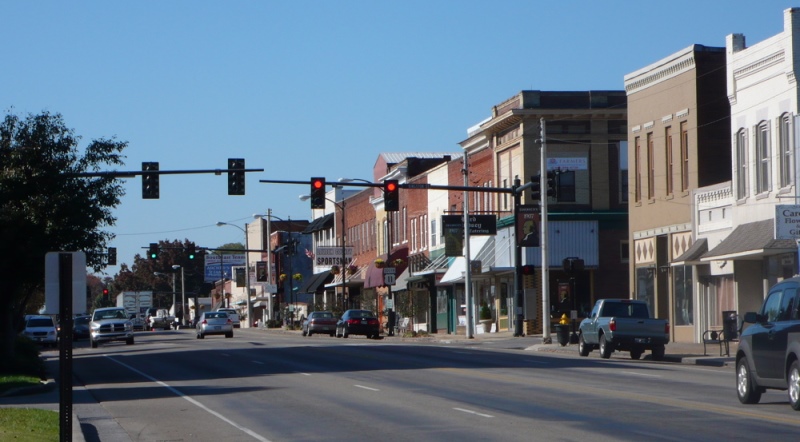Eleven University of Tennessee architecture students spent the fall semester working on four projects to assist Lenoir City, Tennessee with its downtown revitalization efforts. Lenoir City is a town of about 6800 people on the outskirts of Knoxville.
The students were part of a class taught by Tricia Stuth, an associate professor of architecture in UT’s College of Architecture and Design.
The senior-level students worked with faculty and students from various disciplines including hotel, restaurant, and tourism management; advertising and public relations; economics; and Spanish on projects for Lenoir City as part of this year’s Smart Communities Initiative.
The Smart Communities Initiative, overseen by UT’s Office of Service-Learning, pairs faculty and students with Tennessee cities, counties, special districts, and other government organizations to engage in real-world problem solving. SCI is part of the university’s Experience Learning initiative, which stresses hands-on learning to bring classroom lessons to life.
Stuth’s students set out to create adaptive reuse concepts for four sites:
- The former city hall building, proposed for redevelopment as a firehouse;
- The bottom floor of a former bank building, to be converted into functional space for Lenoir City’s school administration;
- Lenoir City’s Old Hosiery Mill facility, proposed for reuse as industrial-style housing;
- Vacant commercial buildings in and around the downtown area, also proposed for redevelopment as medium-and high-density housing with improved pedestrian and bicycle access.
“Architecture students frequently study theoretical ideas concerned with the design of the public realm,” said Stuth. “This semester, we were fortunate to study this in Lenoir City alongside local government, affording us further lessons on the social and economic forces that affect the built environment and daily life.”
Before beginning their work, the students—none of whom were familiar with Lenoir City—did an exercise that taught them how to put themselves in others’ shoes.
The students analyzed buildings in their own hometowns to see how well they met community needs. They then used the same approach to look at facilities in Lenoir City.
“Architects often have to put themselves in a user’s shoes to really relate to the people you are designing for,” said Kerri Nickel, a student in the class. “Empathy is so important. We need to know how to relate to numerous perspectives in order to create something that benefits everyone.”
After their study, the students met with city representatives to propose various projects and choose which should be their focus.
After the four projects were determined, Nickel opted to work on designing new housing plans with an eye on making Lenoir City more pedestrian friendly.
“My plan really attacks the issue of mobility. My hope is that this proposal can spark interest in the idea of urban retreat and in pedestrian activity in the city,” Nickel said.
“This experience was extremely valuable, and I really have enjoyed it,” she said. “Up until this point, we have looked at architecture almost from an aerial view, and this semester we really got to put our feet on the ground, bringing it very close to home for many of us.”
Photo of downtown Lenoir City by DwayneP via Wikipedia.

